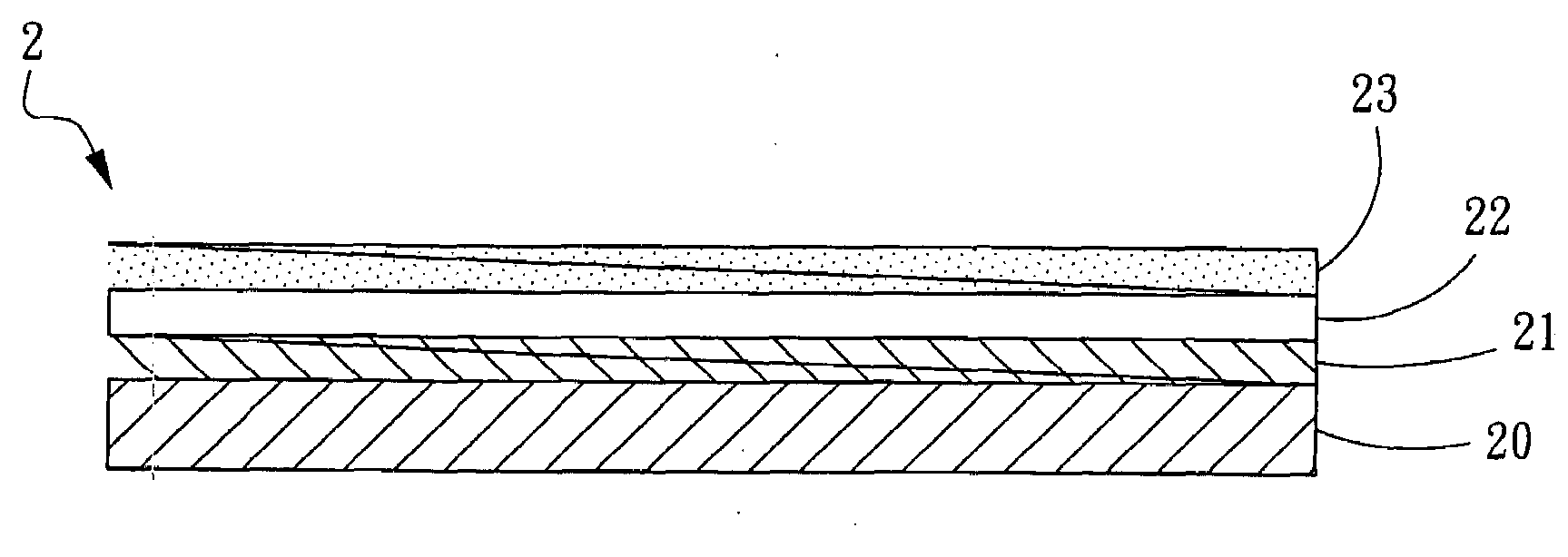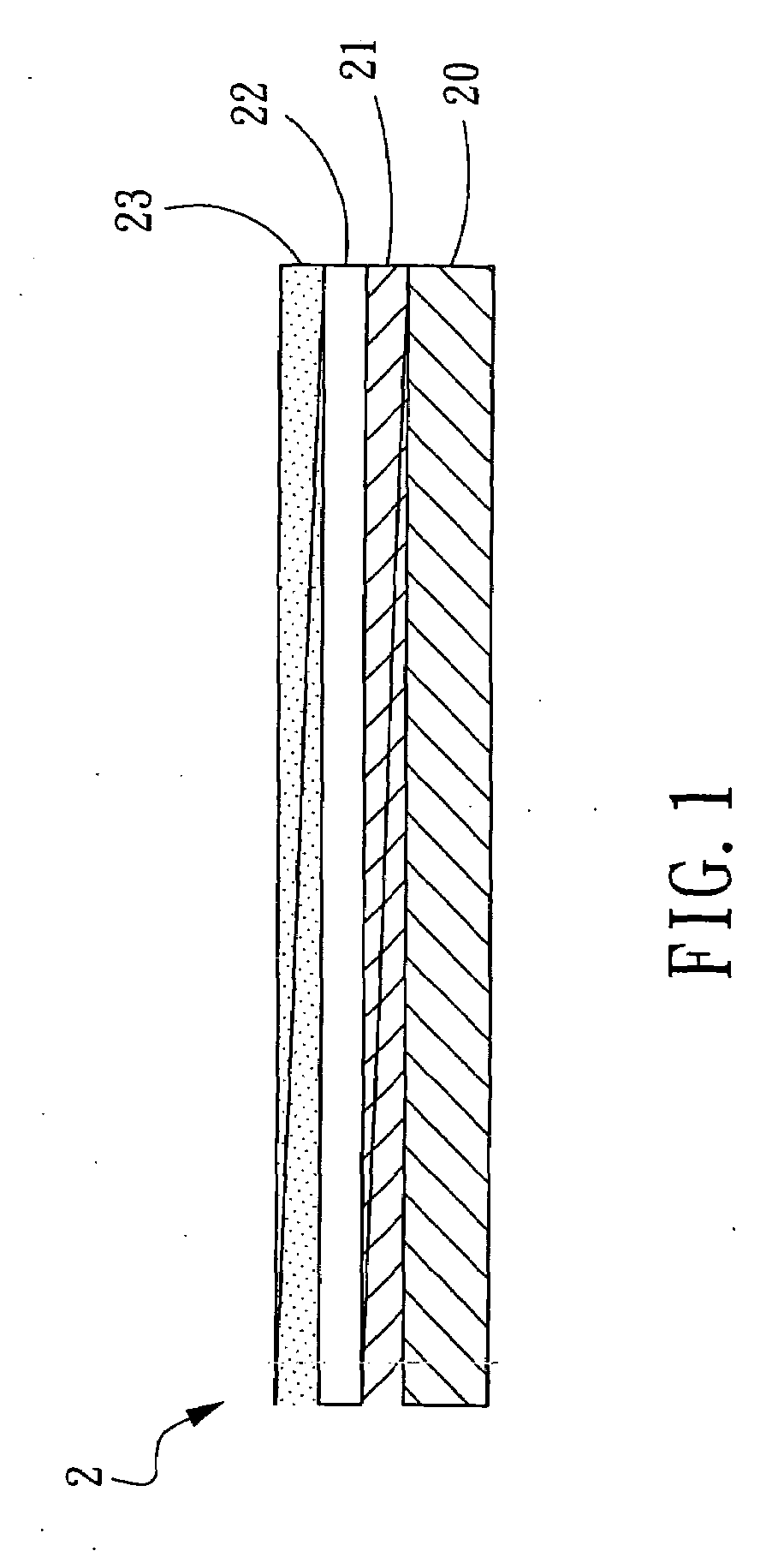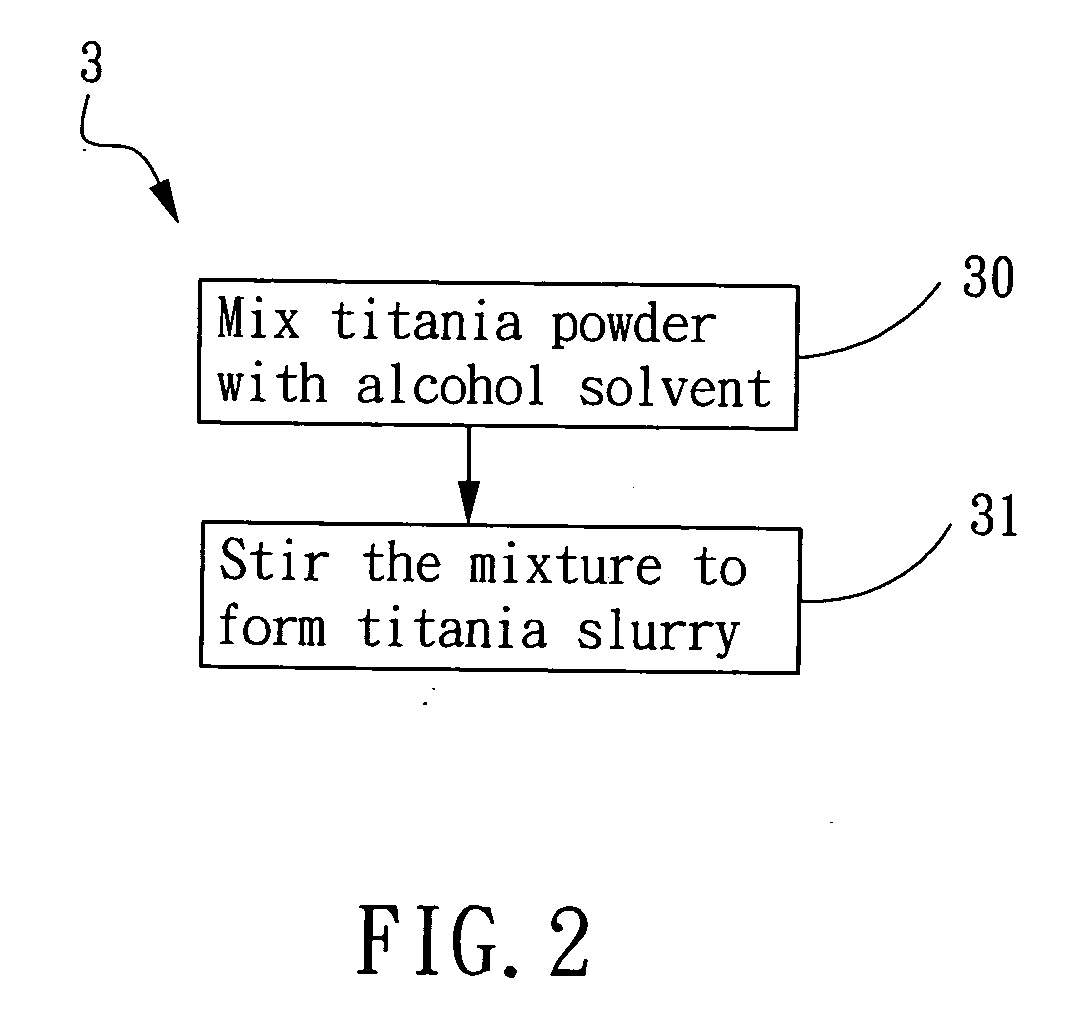Multi-layer film electrode structure and its preparation
a film electrode and electrode structure technology, applied in the field of multi-layer film electrode structure, can solve the problems of high-tech energy industries that require high-purity raw materials, complex preparation, and high cost of raw materials used, and achieve the effects of preventing circuit shorting, improving adhesion, and facilitating electron conductance and dye distribution
- Summary
- Abstract
- Description
- Claims
- Application Information
AI Technical Summary
Benefits of technology
Problems solved by technology
Method used
Image
Examples
example 1
Preparation of Fine Particle Titania Slurry and a Fine Titania Film
[0045]In a 30 mL Erlenmeyer flask, 1.36 grams titanium tetrabutoxide were added into 20 mL butanol. The flask was covered with a cap and stirred in a vibrator for at least 2 hours, preferably 3 hours to form homogeneous slurry. The resultant homogeneous slurry was evenly coated on a FTO conductive glass substrate by using a doctor blade and air-dried at room temperature for 3 to 8 hours, preferably 5 hours. Then the resultant substrate was calcined in an oven at a temperature of from 450 to 500° C. for 0.5 to 1 hour and cooled to room temperature to form a fine and transparent titania film on the FTO glass substrate. The film exhibited excellent adhesion to the substrate and had an average particle size of from 10 to 30 nm and a thickness of from 1 to 5 μm, preferably 2 to 3 μm.
example 2
Preparation of Porous Nanometer Titania Slurry
[0046]10 mL isopropanol was mixed with 37 mL titanium ethoxide to form a isopropanol solution. Separately, in a 500 mL Erlenmeyer flask, 80 mL acetic acid was mixed with 250 mL distilled water to form an aqueous solution. The flask was placed into a thermostat at a constant temperature of about 5° C. The above isoproapnol solution was drops-by-drops added into the aqueous solution at a rate of about 2 drops / sec with constantly stirring over 1 hour. After completing the addition, the resultant solution became transparent. If there still remained as a suspension, the stirring time would be increased until the solution became transparent. The transparent solution was then placed in a thermostat at a temperature of 80° C. for 3 hours and then cooled. At this time, the solution became into a gel state. The gel solution was placed in an autoclave at a temperature of 190° C. for 12 hours and then cooled to room temperature to form a two-phase s...
example 3
Preparation of a Hybrid Titania Mixture Slurry of Porous Nanometer Titania and Commercial Available Titania Power and a Hybrid Titania Film
[0047]2 mL of the porous nanometer titania slurry prepared from Example 1 was added with P25 titania powder (commercial available from Degussa) and ground together for 10 to 20 minutes to form a hybrid titania mixture slurry wherein the P25 titania powder comprises 5 to 30% by weight, preferably from 10 to 20% by weight, of the hybrid titania mixture slurry. Then the hybrid titania mixture slurry was added with Nb2O5 or Ta2O5 powder and ground together for additional 10 to 20 minutes to form a homogeneous hybrid titania mixture slurry wherein the Nb2O5 or Ta2O5 powder comprises 1 to 10% by weight, preferably from 2 to 6% by weight, of the hybrid titania mixture slurry. The resultant homogeneous hybrid titania mixture slurry was evenly coated on a FTO conductive glass substrate by using a doctor blade and air-dried at room temperature for 3 to 8 h...
PUM
 Login to View More
Login to View More Abstract
Description
Claims
Application Information
 Login to View More
Login to View More - R&D
- Intellectual Property
- Life Sciences
- Materials
- Tech Scout
- Unparalleled Data Quality
- Higher Quality Content
- 60% Fewer Hallucinations
Browse by: Latest US Patents, China's latest patents, Technical Efficacy Thesaurus, Application Domain, Technology Topic, Popular Technical Reports.
© 2025 PatSnap. All rights reserved.Legal|Privacy policy|Modern Slavery Act Transparency Statement|Sitemap|About US| Contact US: help@patsnap.com



